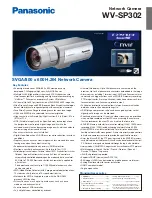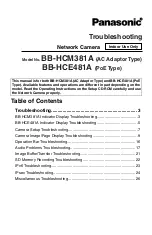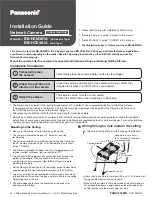
17
S3-5: Scrambler – This strap enables the data scrambler to be used with 64 kbps
Clear Channel operation. Select this strap to reduce the probability of customer data
accidentally generating network control codes. The DSUs at each end must be 3500
Series DSUs, and both must be strapped the same (scrambling or no scrambling).
Unless all DSUs on a circuit are 3500s, scrambling should be disabled.
S3-6: EIA-232-D/V.24 DTE Interface/CCITT V.35 DTE Interface – This strap selects
either the EIA-232-D port or the V.35 DTE port as the active interface.
S4-1 – S4-6: Network Address – Network Addresses are only required for 3510
tributary DSUs installed in DATAPHONE II 2600 diagnostic networks. Network
addresses must be unique on the multipoint network. Obtain the network address from
the installation order or contact the network management center.
S5-1: Signal Ground – Frame Ground – This strap connects Signal Ground to Frame
Ground, or separates Signal Ground from Frame Ground. (This strap only applies to
Model 3510 DSUs. For the Model 3511 DSUs, the strap is on the UAC.)
S5-2: Test Mode Indication – When this strap is enabled, Pin 25 in the EIA-232-D
interface of the DSU is ON to indicate when the DSU is in a test condition; it is Off when
the DSU is operating normally. When this strap is disabled, Pin 25 is opened toward the
DTE.
S5-3: Test Mode Indication – This strap forces the use of Pin NN of V.35 interface of
the DSU to indicate when the DSU is in a test condition. When this strap is disabled,
Pin NN is opened toward the DTE.
S5-4: Not used. Should be left open.
S5-5: DSR Always ON – When enabled, this strap overrides any other DSR-related
straps and ensures that DSR is always ON as long as the DSU has power and is
functioning. When disabled, DSR is an active interface lead.
S5-6: Diagnostic Message Clamping – If this strap is enabled, the tributary DSU will
clamp received data to MARK and received line signal detect to Off whenever 2600 or
3500 Series diagnostic test/command messages are received. These messages are
detected at a tributary DSU by the presence of Control Mode Idle signals. The clamping
prevents diagnostic messages from reaching the customer DTE interface. If the control
DSU must be strapped for Switched Carrier, then this strap must be disabled at the
tributary DSU. The tributary DSU will pass diagnostic messages to its RXD lead except
when the DSU is involved in a test or has been disabled.
NOTE:
This strap is only required for Model 3510 tributary DSUs installed in
DATAPHONE II 2600 diagnostic networks. For all other applications, Diagnostic
Message Clamping should be disabled.





































